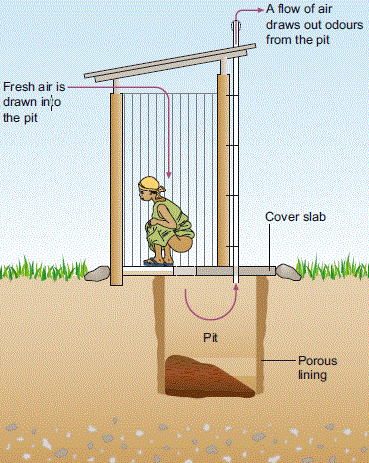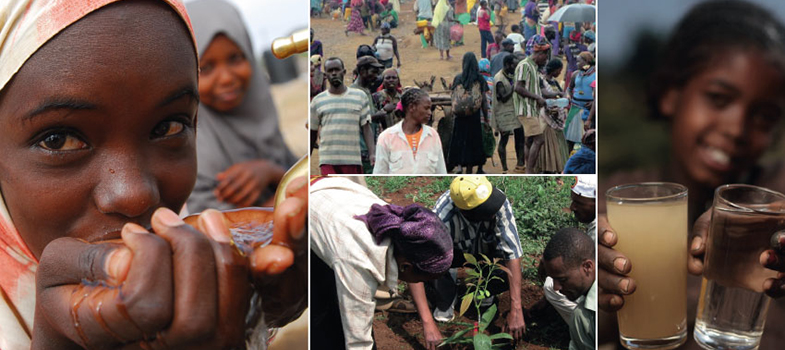5.4.1 Ventilated improved pit latrine
The ventilated improved pit latrine or VIP latrine differs from a standard improved latrine due to the addition of a vent pipe (Figure 5.9). The VIP latrine was developed to overcome the problems of odour and fly breeding commonly found in unvented pit latrines.

Odour control is achieved by air coming in through the superstructure, entering the squat hole and pushing the hot, smelly air in the pit upward through the vent pipe. The pipe is typically 110–150 mm in diameter and reaches more than 300 mm above the highest point of the superstructure. Wind blowing across the top, open end of the vent pipe carry the odorous gases away. The thermal effect of the sun heating the vent pipe also draws odorous gases out of the pit; this effect can be improved by painting the pipe black, which makes the vent pipe warmer and creates an updraft that pulls air and odours up and out of the pit. Reducing the continuous air flow by obstructing either the squat hole or the vent pipe reduces the effectiveness of odour control.
Fly control is achieved by a screen at the top of the pipe. Flies outside the latrine attracted to the odour emitted by the vent pipe are unable to pass inwards through this screen. Flies emerging from the pit are attracted to the light at the top of the pipe; they become trapped under the screen, and eventually die. For effective fly control the inside of the latrine must be kept dark. The mesh size of the fly screen must be large enough to prevent clogging with dust and allow air to circulate freely. Aluminium screens with a hole size of 1.2–1.5 mm have proved to be the most effective (Tilley et al., 2014).
5.4 Improved latrines
